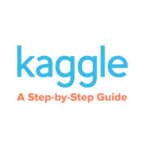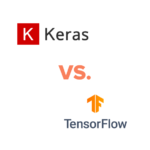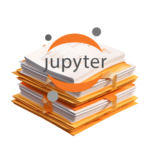![Exceptional_Programming_Languages_for_Artificial_Intelligence_Integration[1]](https://setronica.com/wp-content/uploads/2024/02/Exceptional_Programming_Languages_for_Artificial_Intelligence_Integration1.jpg)
5 Exceptional Programming Languages for Artificial Intelligence Integration
Kristijan Pušić | February 16th, 2024
Are you interested in AI and wondering which programming language to learn in 2024? You are in a situation where the first thing you need to do is to choose a framework for this quest and not the language. Usually, the choice between Google (TensorFlow) and Meta (PyTorch) in this area of AI frameworks will satisfy most developers out there. Both support most of the programming languages commonly used in IT.
Which one to choose, which way to go? The best advice would be to start your new AI project with a technology you are already familiar with. If the idea is also to learn a new language while doing an AI project? In that case, let’s see which new language would be most useful to learn in 2024. What could benefit your company the most in the coming years, not strictly related to existing AI projects? What would be the most useful for the company and future customers? What would be the most tactful language to learn?
#1 RUST: An aggressive newcomer to the corporate world
Mozilla, Microsoft, Amazon Web Services (AWS), Google, Facebook (Meta), Apple, Dropbox, Cloudflare, Discord, Twitter/X. The list of Rust companies is quite impressive! AI assistants have accelerated the learning of RUST. It is a low-level language after all and this AI assistant change will trigger faster Rust adoption. The next big thing is finally here and living its corporate life, far away from blockchain, contracts and gossip. A serious language for serious programming. TensorFlow likes RUST, so dive into a great framework TensorFlow with RUST as the most promising enterprise IT language. Macros in Rust generate code based on input, simplifying repetitive patterns and making code more concise. Rust macros simply allow us to write code that writes more code, also known as meta-programming. Macros are used extensively in Rust. Enough from me, check out what Linus Torvalds has to say about RUST and Linux.
#2 Typescript: frontend devs favorite
A superset of JavaScript. TypeScript provides strong static typing. This feature is particularly useful in AI development, where large data sets and complex algorithms are often used. It’s widely used in front-end development around the world, and is gaining traction for full-stack development thanks to Node.js. It was developed by Microsoft and released in 2012.
#3 Golang: fast adoption
Go is a high-level, statically typed, compiled programming language developed at Google in 2009. It is widely used in enterprise IT ecosystems. Go’s speed and performance are well suited to the CPU-intensive, highly compute-intensive computations required by AI solutions. It is faster than Python, easier to use than other machine learning platforms, and offers several machine learning libraries.
#4 Java: it is never too late to learn java
The undisputed ruler of the programming world by the number of applications written in it. With compatibility with TensorFlow and hosting libraries such as the Deep Java Library, Kubeflow and OpenNLP, Java is well equipped for AI tasks. Its simplified debugging, user-friendly syntax and support for object-oriented patterns make it a versatile choice for AI developers. The year is 2024, for the record!
#5 Python: A Pioneering Force in AI
Despite predating the AI boom, Python is one of the most popular languages for AI development. Known as the primary language for machine learning, Python owes its popularity to its origins as a robust data analytics tool, well-established in the realm of big data. In particular, Python’s dominance in AI is reinforced by dedicated frameworks such as TensorFlow, scikit-learn, PyTorch, Keras and Theano, which are explicitly designed for machine learning and deep neural network tasks. Their simplicity adds to their appeal, making them an ideal choice for developers new to AI.
Best choices for Individual Developers
- Diversify with Rust: Given its growing adoption in enterprise environments and its compatibility with TensorFlow, learning Rust could significantly enhance your value in the job market. It’s especially relevant if you’re interested in systems programming, IoT, or performance-critical applications.
- Embrace TypeScript for Web Projects: If your focus is on front-end or full-stack development, mastering TypeScript can offer a significant advantage. It provides a more structured approach to JavaScript development, making it invaluable for projects involving complex data handling and UIs.
- Explore Golang for Backend Services: For developers looking to build efficient, scalable backend services, Golang is an excellent choice. Its simplicity, coupled with powerful concurrency support, makes it ideal for microservices architectures and cloud-native development.
Best choices for IT companies
- Invest in Python for AI Initiatives: Python’s extensive library ecosystem (TensorFlow, PyTorch, scikit-learn) makes it the best starting point for AI projects. Companies should consider investing in Python training for their teams to expedite AI development.
- Java for Enterprise-Level Applications: Organizations with a strong Java footprint should leverage Java’s robust ecosystem for their AI projects. Java’s wide-ranging library support, including for AI tasks, allows for seamless integration with existing enterprise systems.
- Rust for Performance-Critical Applications: Companies working on performance-sensitive products (such as embedded systems, networking hardware, or high-frequency trading platforms) should consider adopting Rust. Its safety and performance features can lead to more reliable and efficient applications.
Conclusion: Empowering Growth with AI
While these five languages have different strengths, choosing the right one depends on the specific AI project and the overall idea behind it. Python is the obvious winner, followed by Java, with a number of AI projects being undertaken in these languages. For organizations looking to integrate AI development services, the journey begins with the strategic adoption of one of these languages. With a skilled development team, the possibilities are limitless and AI becomes a catalyst for accelerated business growth. Want more unified front-end solutions? Choose Typescript. Interested in IT enterprise customers for development outsourcing? Hop on the Java train. Want to be an AI development company? Then definitely some Python! Fast learning curve in OOP and microservices and concurrency is your choice? Google’s Golang loves you. Want the best value for you and your company? Check out what Linus Torvalds has to say. RUST!
Related posts
- How to Use Kaggle Datasets for Research: A Step-by-Step GuideUse Kaggle datasets for research responsibly. Steps: Create an account, explore, check licenses, clean data, conduct research, cite, and share.
- Keras vs. TensorFlow: Understanding the Powerhouse Duo of Deep LearningKeras and TensorFlow complement each other, choose based on needs and expertise.
- Deep Dive into eProcurement: New Article SeriesDeep dive into eProceurement: New Article Series — Stay tuned for expert advice & best practices that empower professionals in the eProcurement industry.
- Version Control of Jupyter NotebooksLearn how to effectively manage version control for Jupyter Notebooks. Discover tools like nbdime and nbconvert that enable viewing differences, enhancing code review, and streamlining workflows.
- Anemic Domain Model Anti-PatternAvoid the Anemic Domain Model anti-pattern: learn its drawbacks, violations of OOD principles, and strategies to build cohesive domain models.
- The Most Efficient Development Philosophy: Think DevOpsIn the world of modern technologies, software development is one of the fastest-evolving areas. Through the last decades, even development approaches changed and brought out new methodologies. The most popular one today is DevOps. What Kind of Beast is DevOps? Sometimes DevOps is considered as just a term for particular tools, in fact being a
Let’s start building something great together!
Contact us today to discuss your project and see how we can help bring your vision to life. To learn about our team and expertise, visit our ‘About Us‘ webpage.

Recent Posts
- How to Efficiently Scale Your Startup’s Tech Stack for Maximum Growth
- Shine in Your Interview: 3 Dos and Don’ts to Prove Your Competence with Confidence
- Elevator Pitch: How to “Sell” Yourself in One Minute
- 9 Best Places to Find Free Datasets for Your Next Project
- 9 Key Measures to Protect Digital Assets and Ensure Data Integrity






